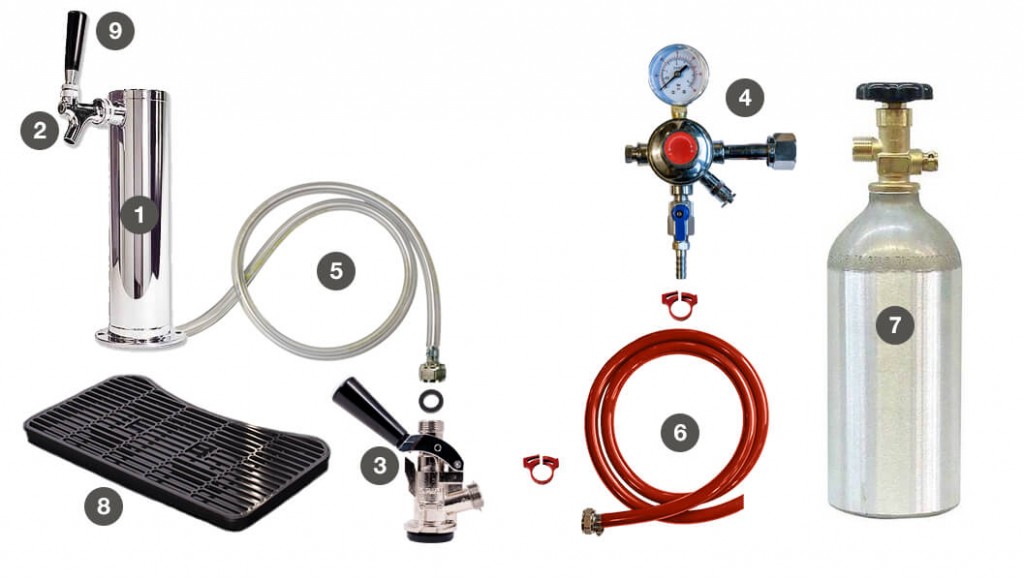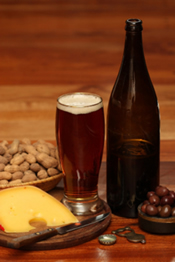
In the wondrous age of the interweb, we have seen many strange, amazing, and annoying trends. One trend that encompasses all of these traits is the concept of social networking websites. Sites like myspace, verb, tribe.net, facebook, hi-5, the list goes on and on.
It becomes so hard to choose with hundreds of websites trying hard get your whole life listed in their database. It makes me wonder, sometimes- why would ANYONE want EVERYONE on the web to be able to know EVERYTHING about their self? It seems as though too many people don’t take the time to consider this. I’ve just got to put this out there before I encourage anyone to join yet another social networking website. I am a fan of disclaimers.
Social networking on beer gives me more hope than social networking just for social networking’s sake (gah!). With a highly focused topic, it is clear that a social networking site about beer can be a good thing. This is true of the many beer forums as well. Such sites can help a lot of beer fans to better understand the craft of brewing and the wide spectrum of flavors accessible in the beer universe. I still wouldn’t suggest that you sign up for anything with your actual email address, unless you just luuuuv spam. And I’m not suggesting you use your grandma’s email address either. Just make one up that you will never use again except to get confirmed at the beer social networking website you are checking out.
One site that strikes me right off the bat as a good resource is the homebrew wiki (reachable at http://www.homebrewtalk.com/wiki). This site and wikipedia (http://www.wikipedia.org) are both veritable treasure troves of information regarding beer, wine, mead, and basically any fermented or distilled beverage. You can find info about virtually every type of beer as well as the history of beer. Before entering the forums and social networking sites about beer, I suggest taking a surf through the wikipedia or homebrew wiki search engines.

Now, as far as actual social networking sites, I must say that I was initially attracted to brewpoll.com through their affiliate website beersmith.com. Beersmith.com offers a free trial of their Beersmith software, a program that helps homebrewers to determine what ingredients to use for their recipes, accounting for price and amount of beer to be made, among other factors, and offers a brew calendar and reminders, too. Brewpoll.com is itself a “Digg-Like” news site where home brewers and craft beer fans can share and gather news. A voting system allows members to catapult relevant and useful articles to the top of the lists. Since this site links to “news” stories from other sites, it offers a chance to search a wide array of topics and beer making tutorials.
This site will probably be quite useful if you are a home brewer with some specific questions, like this one: Should I put olive oil in my beer? I had never thought of that on my own, but some brewers at New Belgium brewery have tried it and I found their results on brewpoll via fermentarium.com!

Another social networking site on beer is mustlovebeer.com. Although it is a fairly young site with few members, it is equipped with many myspace-like features, such as extensive profile information, profile pictures, room for uploading pictures, messages, and friends. This site seems somewhat desolate at this time, but if you have friends a long way away that you want to keep in touch with, it might be a good way to do so while also meeting other beer fans with similar interests… in time. The site only seems to have 200 members or less, from what I have seen poking around on it.

Although it is not, in the strictest sense, a social networking site, realbeer.com is a fun site for information about beer. I recommend visiting this site if you are just “surfing the web” to find out interesting news flying about in the beer world, funny stories, and the like. I discovered three great stories just on one visit: a “Bones & Brew” Zoo benefit in Oregon put on by Rogue brewery, 2,000 pints of ale mis-delivered to Windsor Castle, and a historical mis-quote attributed to Ben Franklin. These were just some of the top stories on this site.

Homebrewtalk.com is a very active site which has social networking applications. This site is full of articles, recipes, updates on new equipment, and many stories about home built beer making set-ups, kegerators, and beer interest stories too. The site is funded by its members and some advertising, so they ask all members to consider upgrading accounts to either yearly or lifetime memberships ($25 a year or flat $100). Basic memberships are offered for free, however.

Homebrewtalk.com is a very active site which has social networking applications. This site is full of articles, recipes, updates on new equipment, and many stories about home built beer making set-ups, kegerators, and beer interest stories too. The site is funded by its members and some advertising, so they ask all members to consider upgrading accounts to either yearly or lifetime memberships ($25 a year or flat $100). Basic memberships are offered for free, however.

BeerJunction.com is a new social networking site for beer lovers that seems to focus more on sharing the love of home brewing. You can create a profile and log all of your brewing in a personal blog. One cool feature is the ability to add pictures, video and create your own groups. This community is handy for home brewers, or home brew clubs, or someone who really loves beer and wants to create a network of friends that love the same.
With this basic overview of sites, you should be able to have most of you questions and queries answered. By gaining membership with these social networking sites on beer, you can certainly find more people who may be able to answer any questions you have about beer.















